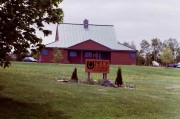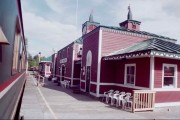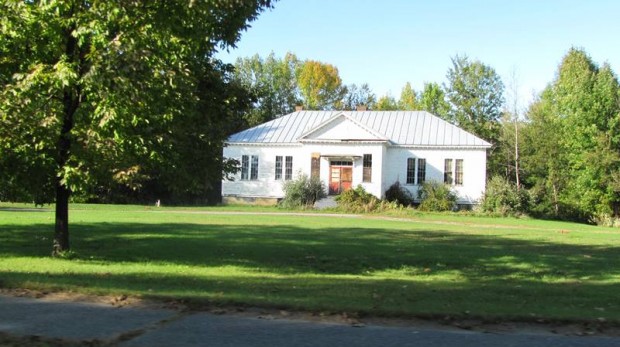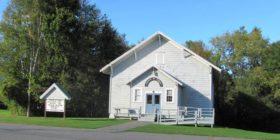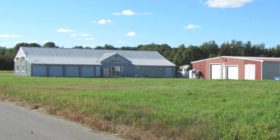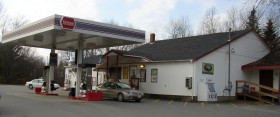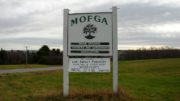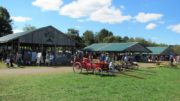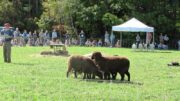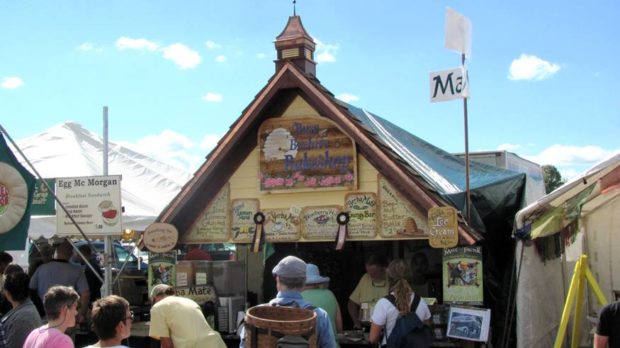
| Year | Population |
|---|---|
| 1970 | 1,280 |
| 1980 | 1,431 |
| 1990 | 1,817 |
| 2000 | 1,889 |
| 2010 | 2,099 |
| Geographic Data | |
|---|---|
| N. Latitude | 44:35:37 |
| W. Longitude | 69:19:56 |
| Maine House | District 99 |
| Maine Senate | District 11 |
| Congress | District 2 |
| Area sq. mi. | (total) 41.8 |
| Area sq. mi. | (land) 40.0 |
| Population/sq.mi. | (land) 52.5 |
County: Waldo
Total=land+water; Land=land only |
|
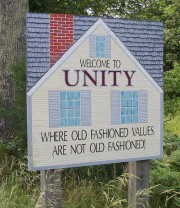 [YOU-nih-tee] is a town in Waldo County, settled in 1784 and incorporated on June 22, 1804 from a portion of Twenty-Five Mile Plantation, from which it annexed additional land in 1813.
[YOU-nih-tee] is a town in Waldo County, settled in 1784 and incorporated on June 22, 1804 from a portion of Twenty-Five Mile Plantation, from which it annexed additional land in 1813.
Nathan A. Farwell was born here on February 24, 1812; he served in the state legislature (House and the Senate, where he was President), and as a U.S. Representative in Congress.
Frederick H. Parkhurst was also born here on November 5, 1864. He was elected governor in 1920 but died a month into his term.
In 1881, Mr. Varney characterized the town as follows:
The principal water course is Sandy Stream, which runs through the town from the south-east to Unity Pond. Unity village is situated upon this stream about one mile south of the pond. The principal water powers are on this stream.
The manufactures consist of plows, carriages, one grist and planing mill, lumber (six mills), tinware, cheese (Unity Cheese Factory), harnesses, etc., etc. The Belfast branch of the Maine Central Railroad runs through the town, having a station at the village. The inhabitants in general have a thrifty appearance, and the roads are good.
It is home to Unity College, a small liberal arts institution in a rural setting where students are largely focused on environmental and natural resource interests.
The College began in renovated chicken barns and has grown to become a respected small institution.
Nearby, the Common Ground Country Fair has its permanent location, hosting thousands of visitors each fall.
The Belfast and Moosehead Lake Railroad (B&ML) has its home here at Unity Station. It does not travel to Moosehead Lake, but seasonally between Unity and Belfast as a scenic recreational adventure.
In recent years Amish families have moved to Unity, as well as nearby Thorndike, and to Aroostook County, sustaining the remaining agricultural tradition. The main village is at the south end of the 2,528-acre Unity Pond, also known as Lake Winnecook, at the junction of routes 9, 139, 220 and U.S. Route 202.
Form of Government: Town Meeting-Select Board-Administrative Assistant.
Common Ground Country Fair
The Fair, first held in 1977, is organized by the Maine Organic Farmers and Gardeners Association. See more at Agricultural Fairs.
Additional resources
Freeman, Dorothy E. Ordinary, Yet Extraordinary: Six Decades In The Life Of Unity, Maine. Unity, Me. D.E. Freeman and S.M. Simeone. 2002.
Hawkes, Andrea Constantine. The Same Great Struggle: the History of the Vickery family of Unity, Maine, 1634-1997. Gardiner, Me. Tilbury House. 2003.
Murch, Edmund. A Brief History of the Town of Unity. (read by Edmund Murch at a meeting of the Harvest Moon Grange, Thorndike, 1892.) Belfast Me. G.W. Burgess, Printer. 1893.
Taber, James R. Ledger, 1874-1882. (Cataloger Note: A ledger used by Taber to record purchases made at his general store in Unity. Taber also used the volume to record work he did for others, including fencing, haying, repairs, etc. His work as executor for various decedents’ estates is also documented in the volume.) [University of Maine, Raymond H. Fogler Library, Special Collections]
Unity Today, 1975-1976. Bicentennial Booklet Committee. Unity, Me. 1976?
Vickery, James B., Jr. Chapters In The History Of Unity, Maine. 1950. (Thesis (M.A.) in History–University of Maine, 1950.)
Varney, George J. A Gazetteer of the State of Maine. 1881. p. 548.
National Register of Historic Places – Listings
Photos, and edited text are from nominations to the National Register of Historic Places researched by Maine. Historic Preservation Commission.
Full text and photos are at https://npgallery.nps.gov/nrhp
Chase, Hezekiah, House
 [U.S. 202] The Hezekiah Chase house stands out dramatically among its neighbors on Unity’s quiet main street. A late brick Federal structure, its simplicity conveys traditions of its Quaker heritage. Stephen Chase, a Quaker from Durham settled in Unity in 1782. His son, Hezekiah, a more worldly man, who gradually broke away from the religious tenets of his father, inherited the property and built the house. Industrious and honest, he was highly respected and active in the community and was always referred to as “Judge Chase”. His son, Joseph was burdened by debt since father had married a woman much younger than himself and she was given a lifetime use of the property.
[U.S. 202] The Hezekiah Chase house stands out dramatically among its neighbors on Unity’s quiet main street. A late brick Federal structure, its simplicity conveys traditions of its Quaker heritage. Stephen Chase, a Quaker from Durham settled in Unity in 1782. His son, Hezekiah, a more worldly man, who gradually broke away from the religious tenets of his father, inherited the property and built the house. Industrious and honest, he was highly respected and active in the community and was always referred to as “Judge Chase”. His son, Joseph was burdened by debt since father had married a woman much younger than himself and she was given a lifetime use of the property.
George Colby Chase, son of Joseph, grew up in the old brick house. Born in 1844, he attended local schools and, at partly through the sympathetic encouragement of his mother, acquired a love of learning. As early as 17 he taught school on a part time basis in the neighboring town of Thorndike. In 1862 he studied at the Maine State Seminary in Lewiston, a Freewill Baptist institution. During his time there it became a college named after Benjamin E. Bates, a Boston capitalist who had done much to encourage industry in Lewiston. George Chase entered Bates with the second class in 1864. He graduated valedictorian of his class in 1868. Chase became an instructor in Greek at Bates while attending the theological seminary, then became Professor of English at the college. In 1872 he married a college friend, Emma Millett, and built a large home in Lewiston in which his parents and other family members lived.
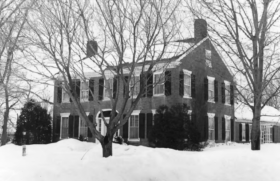 Always dedicated to the interests of the college, he devoted much of his free time and some of his own money to fundraising efforts. In 1894 his devotion was rewarded by election to the presidency of Bates College. The college was in a precarious state in the midst of a financial depression. During his term he promoted the attendance of women, installed a Dean of Women and enlarged female dormitory facilities. He obtained a contribution of $150,000 to the endowment fund, partly through a Carnegie Grant of $50,000. With the gifts several buildings went up. Forced by failing health to retire in 1917, he left behind a firmly established, highly respected institution. He died in 1919. His boyhood home in Unity, to which he was always devoted stands as a monument to this gentle scholar and wise administrator.* [Frank A. Beard photos, 1977]
Always dedicated to the interests of the college, he devoted much of his free time and some of his own money to fundraising efforts. In 1894 his devotion was rewarded by election to the presidency of Bates College. The college was in a precarious state in the midst of a financial depression. During his term he promoted the attendance of women, installed a Dean of Women and enlarged female dormitory facilities. He obtained a contribution of $150,000 to the endowment fund, partly through a Carnegie Grant of $50,000. With the gifts several buildings went up. Forced by failing health to retire in 1917, he left behind a firmly established, highly respected institution. He died in 1919. His boyhood home in Unity, to which he was always devoted stands as a monument to this gentle scholar and wise administrator.* [Frank A. Beard photos, 1977]
Village School
[69 School Street] The Village School is a one-story, three-room, eclectically-styled, schoolhouse located in the Waldo County town of Unity, Maine. The school was constructed in a central location in 1898 as smaller, dispersed, rural districts were being consolidated. The school remained the largest grade school in the town until 1953, when a new school was constructed to alleviate the overcrowded conditions plaguing the school. The Village School was placed in the National Register of Historic Places for its local educational significance, as Unity’s response to continuous changes in the State’s educational system. It represents an intermediary step between the often autonomous nineteenth century district system and the mid-twentieth century full consolidation of town and regional schools. It is also architecturally significant as an example of a three-room schoolhouse built following State of Maine Educational Department recommendations for school buildings.





